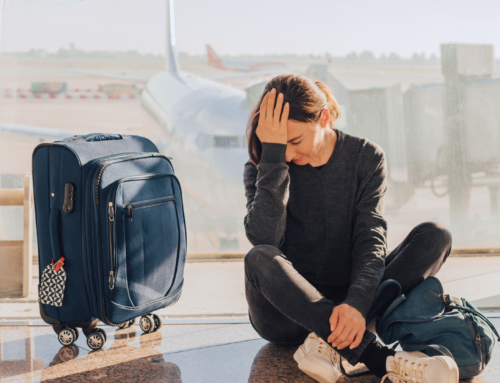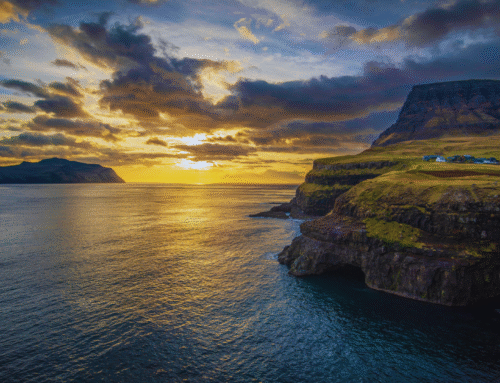Cultural festivals around the world serve as vibrant expressions of tradition and heritage, bringing communities together in celebration. Unique cultural festivals offer a glimpse into the values and joys of different peoples, showcasing their distinct customs and fostering unity among participants. These events often highlight local art, music, and cuisine, providing a rich sensory experience that captivates both locals and visitors alike.
From the colorful Holi festival in India, marking the arrival of spring, to the lively Carnaval in Brazil, which is steeped in history and excitement, each festival has its own story. These gatherings transcend mere entertainment; they embody the spirit of belonging and cultural pride, allowing individuals to connect with their roots and each other.
As globalization increases, many seek authentic experiences, and cultural festivals are an ideal way to understand diverse communities. Attending these events not only offers enjoyment but also deepens appreciation for the intricate tapestry of human expression across the globe.
Historical Significance and Evolution
Cultural festivals have deep historical roots that reflect the traditions and heritage of communities around the world. The evolution of these celebrations highlights how societies adapt and change while retaining their core values.
Historical Roots of Festivals
Festivals originated as a means to celebrate agricultural cycles, religious observances, and major life events. In many cultures, festivals were linked to harvest times or seasonal changes, providing a sense of community. For example, Diwali, the Hindu Festival of Lights, celebrates the victory of light over darkness and has roots in ancient harvest festivals.
Carnivals, such as those celebrated in Brazil and Venice, stem from historical rites and pre-Lenten festivities, blending pagan and Christian elements. In China, the Spring Festival, now known as Chinese New Year, emerged from the ancient tradition of honoring ancestors and deities, marking the arrival of spring. These events reflect the customs and spiritual beliefs of their respective cultures.
Evolution of Celebration
Over time, festivals have evolved, integrating new elements while retaining traditional aspects. Oktoberfest, which began in 1810 as a royal wedding celebration, has transformed into a world-renowned beer festival, showcasing Bavarian culture and attracting millions. This shift illustrates how local customs can gain global significance.
Modern festivals often combine traditional practices with contemporary influences, appealing to diverse audiences. They serve not only to preserve cultural heritage but also to foster cultural exchange. As societies evolve, festivals adapt, often incorporating themes like sustainability and inclusivity, which resonate with current social values. Thus, the evolution of celebrations reflects broader cultural trends and the dynamic nature of identity.
Cultural Festivals Around the World
Cultural festivals offer a glimpse into the traditions and shared values of communities worldwide. Each event showcases unique practices, vibrant colors, and varied customs reflecting local heritage and identity.
Asia’s Vibrant Celebrations
Asia is home to many colorful festivals that celebrate cultural and religious beliefs. Holi, known as the festival of colors in India, marks the arrival of spring with vibrant powders and water fights. Songkran, the Thai New Year, is celebrated with massive water battles symbolizing cleansing and renewal.
The beauty of cherry blossoms is celebrated in Japan with hanami, where people gather under blooming trees for picnics. These events highlight the deep connection between nature and culture, emphasizing joy and community.
European Traditions and Festivities
Europe features a range of traditional festivals, rich in history and cultural significance. Oktoberfest in Germany attracts millions with its beer tents and folk music, celebrating Bavarian culture. La Tomatina in Spain engages participants in a massive tomato-throwing event, bringing humor and fun to the harvest season.
The Running of the Bulls in Pamplona is another iconic event, where participants run alongside bulls through city streets. Events like Carnival in Venice and Mardi Gras in New Orleans showcase elaborate costumes and vibrant parades, reflecting the spirit of celebration.
America’s Diverse Festival Landscape
The Americas celebrate festivals that blend cultural influences from around the world. Day of the Dead in Mexico, or Día de los Muertos, honors deceased loved ones with colorful altars and festive gatherings. This celebration highlights the importance of remembrance in Mexican culture.
In Brazil, Carnival in Rio de Janeiro showcases samba music and dance, attracting thousands of revelers. Meanwhile, the unique Burning Man festival in Nevada’s desert fosters artistic expression and community, emphasizing principles of inclusivity and self-reliance.
African Festivals: A Tapestry of Culture
Africa’s festivals reflect a rich tapestry of traditions and customs. The Naadam Festival in Mongolia combines sports and culture, featuring events like wrestling and horse racing. These activities celebrate the nomadic heritage and community spirit.
Fes Festival of World Sacred Music in Morocco brings together artists from different cultures to celebrate music’s spiritual power. African festivals often include vibrant dances, traditional attire, and rituals that connect attendees with their roots and enhance community bonds.
Festival Activities and Attractions
Cultural festivals offer a diverse array of activities and attractions that entice visitors. They create an immersive environment where culinary delights, music, dance, and visual arts come to life, allowing participants to experience unique traditions.
Culinary Experiences and Cuisine
Food festivals celebrate global cuisines, showcasing local specialties and culinary artistry. Attendees can sample regional dishes, often prepared by renowned chefs or local food vendors. Festivals such as the Fes Festival of World Sacred Music may highlight traditional Moroccan dishes like tagine and couscous, providing a taste of the culture.
Moreover, cooking demonstrations allow participants to learn about unique cooking techniques and ingredients. Workshops often encourage hands-on participation, making it possible for visitors to create their own dishes. Seasonal and locally sourced ingredients play a significant role in these culinary offerings, emphasizing sustainability and flavor.
Music and Dance: A Universal Language
Music and dance are central elements of cultural festivals. They serve as expressive mediums that unite diverse communities. Festivals often feature a variety of musical genres, from folk and classical to contemporary styles, ensuring there is something for everyone.
Traditional music performances, such as those at the Fes Festival of World Sacred Music, showcase ancient rhythms and instruments. Dance performances further amplify cultural expressions, with participants donning vibrant costumes. Attendees might witness traditional dances that tell stories, engage in workshops, or even participate in communal dance experiences.
Visual Arts and Unique Performances
Visual arts are prominently featured at many cultural festivals. Artisans and craftspeople display their work, including paintings, sculptures, and hand-crafted items. This integration of art into festivals encourages appreciation for local craftsmanship and creativity.
Unique performances that combine various art forms often captivate audiences. Street performers, theater troupes, and multimedia installations provide dynamic entertainment. Festivals sometimes include art exhibitions that run parallel to live performances, allowing visitors to immerse themselves in a rich tapestry of artistic expression.
Festivals as a Pillar of Identity and Community
Cultural festivals serve as vital platforms for fostering community connections and preserving heritage. They play a significant role in uniting individuals, allowing for a vibrant expression of local and global influences.
Fostered Unity Through Celebration
Cultural festivals promote a sense of unity among participants by bringing together people from diverse backgrounds. Events such as the Rio de Janeiro Carnival showcase vibrant parades, music, and dance, encouraging attendees to celebrate their shared identities.
Festivals like Diwali and Oktoberfest highlight the customs and traditions unique to their cultures. These gatherings foster inclusivity, allowing communities to experience joy and connection. Through collective celebration, individuals strengthen their ties with each other, reinforcing cultural pride and social bonds.
Cultural Exchange and Global Influence
Festivals often act as conduits for cultural exchange, allowing traditions and practices to flow between communities. Events such as the Edinburgh Festival Fringe attract global attendees, leading to an appreciation for diverse arts and performance styles.
Famous festivals provide a travel bucket list for many. They serve as focal points for sharing culinary delights, music genres, and artistic expressions, ultimately influencing local practices. These encounters stimulate dialogue and understanding, cultivating a rich tapestry of experiences that enhance individual and collective identities.






Leave A Comment